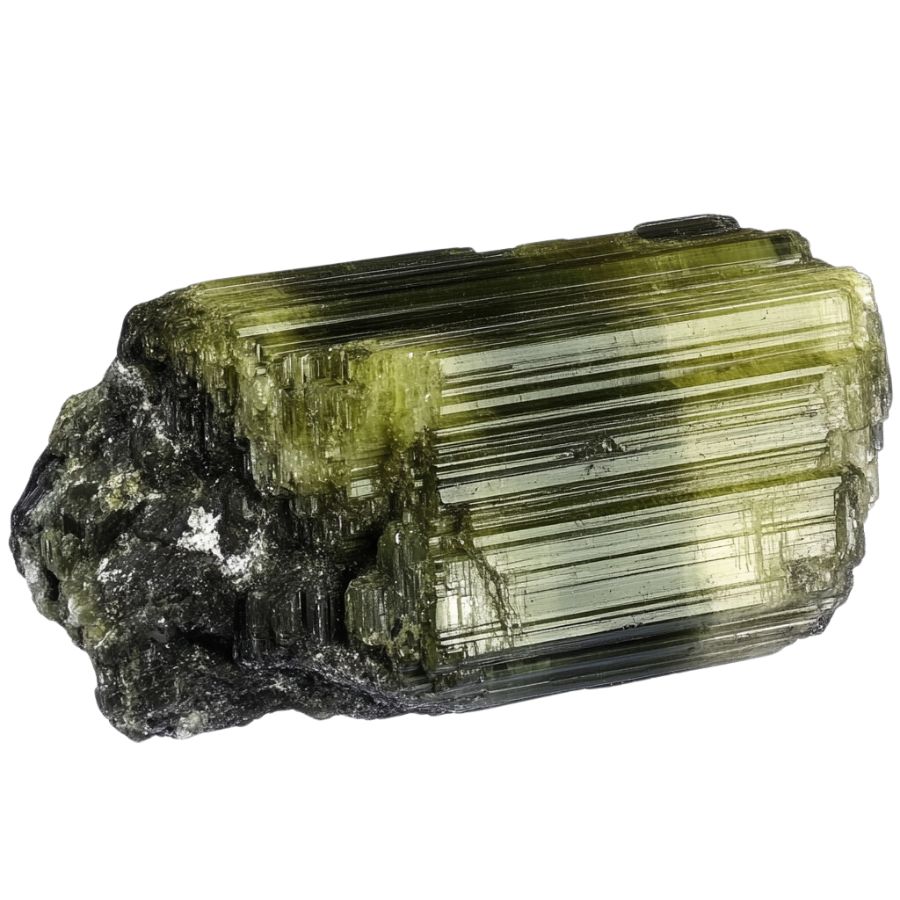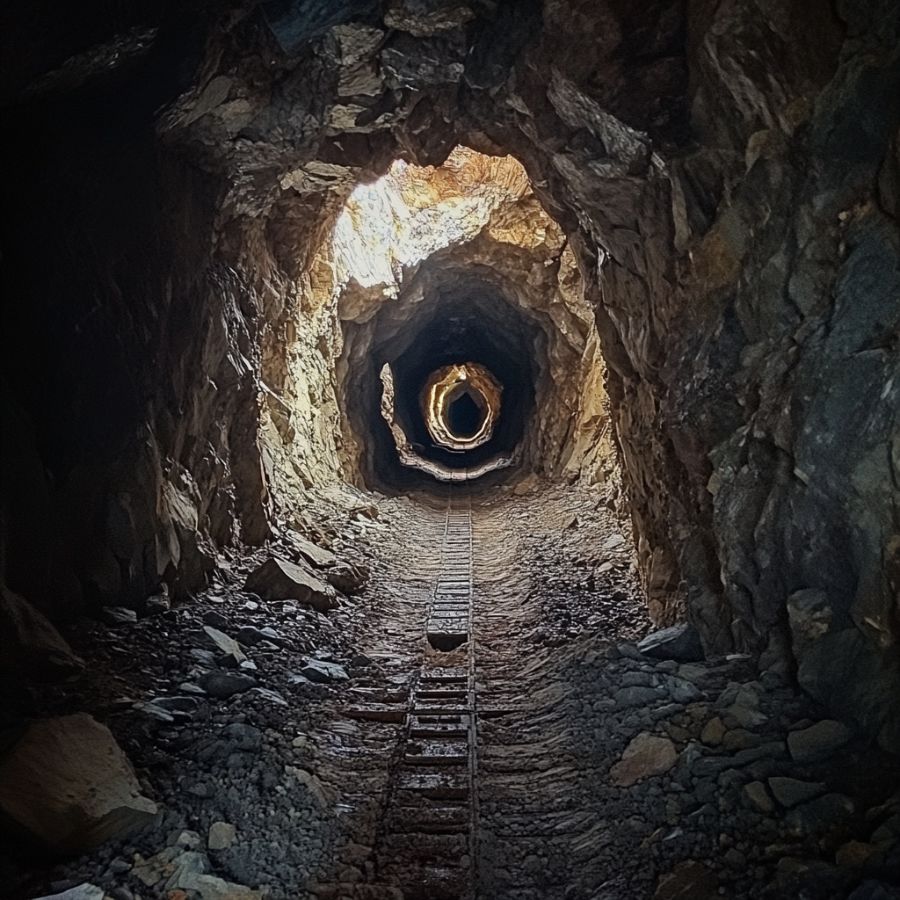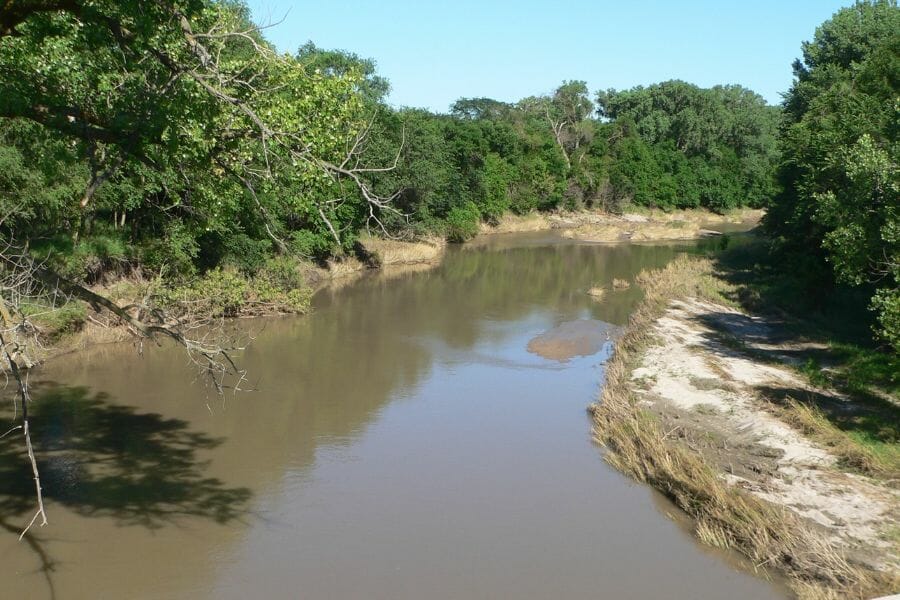Indiana’s limestone deposits have made the state famous in the construction world, with many iconic buildings across America featuring Hoosier stone. But there’s more to Indiana’s mineral story than just limestone.
If you’re hunting for tourmaline in Indiana, you might be feeling a bit lost. It’s not as simple as walking into any quarry or creek bed and finding these colorful crystals. Trust us, we’ve been there.
We’ve done the legwork and talked to local rockhounds and geologists to find the most promising spots for tourmaline hunting in Indiana.
No more wasted weekends at empty sites or misleading locations – these are the real deals where your chances of finding tourmaline are best.
How Tourmaline Forms Here

Tourmaline forms deep underground through intense heat and pressure. It originates from hot, mineral-rich fluids that move through fractures in rocks like granite and pegmatite. As these fluids cool, the minerals within them start to crystallize, forming tourmaline.
The color of tourmaline depends on the specific minerals involved, leading to a wide range of hues including pink, red, green, and blue.
Over millions of years, these crystals grow and become the beautiful, multifaceted stones we see today. Tourmaline is prized for its variety of colors and is often used in jewelry and decorative items.
The Types Of Tourmaline
Several incredible types of Tourmaline can be found in the US as well as in our state. Each is uniquely beautiful and interesting including:
Elbaite

Elbaite is found in pink, red, green, blue, yellow, and even colorless forms. What makes elbaite special is its ability to show multiple colors in a single crystal, like the famous “watermelon” tourmaline with pink and green hues.
This gem stands out due to its complex chemical makeup, which includes lithium, sodium, and aluminum. This composition gives Elbaite its diverse color range and dichroism, allowing it to display different colors when viewed from different angles.
Elbaite has a unique place in history as the first tourmaline variety in which lithium was discovered back in 1818. Some rare types, like the neon blue Paraiba elbaite, are highly sought after by collectors and jewelers.
Schorl

Schorl is known for its deep, rich color. It typically forms long, prismatic crystals with a shiny, glass-like surface when polished. Unlike other tourmalines, schorl gets its distinctive black color from high iron concentrations.
One of Schorl’s most fascinating features is its ability to become electrically charged through heating or rubbing. When charged, it can attract or repel small particles.
This unique electrical property makes Schorl valuable in various industries. It’s used in electronics and manufacturing to control static electricity and electromagnetic interference.
Despite being less colorful than other tourmalines, schorl’s practical applications make it an important and interesting variety.
Rubellite

Rubellite stands out with its vibrant pink to red colors. The most prized ones show a pure, saturated red without any brown or orange hints. This beautiful color comes from manganese in its makeup.
One cool thing about rubellite is its double refraction. It can look like it has two different colors when you view it from different angles.
Dravite

Dravite, or Brown Tourmaline, comes in shades from dark brown to light brown-yellow. It can look a bit like Smoky Quartz, with a semi-see-through quality.
Its crystals are often needle-like or prismatic, with points at both ends. This sets it apart from other tourmalines like the darker schorl or the colorful elbaite.
What makes dravite special is its rich sodium and magnesium content. This sets it apart from other tourmalines. It was first discovered in 1883 and named after the Drava River in Slovenia.
Indicolite

Indicolite is a rare and captivating blue to blue-green stone. It’s prized for its pure, bright blue color, which is considered the rarest within the tourmaline family. The hues can range from light blue-green to deep, rich blue, often with high clarity.
What sets Indicolite apart is its unique optical effects. It shows pleochroism, appearing to change color when viewed from different angles. Some specimens also display chatoyancy, creating a “cat’s eye” effect when cut in a certain way.
Indicolite is sometimes called “Brazilian sapphire” due to its resemblance to the precious gem. However, they’re different minerals.
The increasing demand for blue tourmalines has made indicolite highly sought-after in the gemstone market, appreciated for its beauty and rarity.
Watermelon Tourmaline

Watermelon tourmaline is truly one-of-a-kind. It looks just like a slice of watermelon, with a pink or red center and a green outer layer. This unique look happens because different elements join the crystal at different times as it grows.
These crystals often form in a rounded triangle shape. They’re see-through to somewhat clear and have a glass-like shine. When cut into slices, they really do look like little watermelons!
Cat’s Eye Tourmaline

Cat’s eye tourmaline is known for its mesmerizing chatoyancy effect. This creates a bright band across the stone’s surface, resembling a cat’s eye.
This stone comes in various colors, from green to pink to brown, and is usually semi-translucent to opaque.
What makes this stone special is the perfect alignment of tiny, needle-like inclusions inside it. These scatter light in a unique way, creating that eye-catching effect. It’s quite different from other tourmalines that don’t have this feature.
Unlike other cat’s eye stones, Tourmaline offers a wider range of colors and is often more affordable.
Achroite

Achroite is a rare, colorless variety of tourmaline that looks like a drop of clear water turned to stone. It’s completely transparent, making it unique among tourmalines which usually have color. The name comes from Greek, meaning “without color.”
What’s special about achroite is that it doesn’t change color when viewed from different angles. It means the stone can be cut in many ways without losing its clarity.
Verdelite

Verdelite is known for its beautiful green color. It can range from light green to deep emerald.
One thing that makes verdelite special is that you can find big, clear crystals of it. This isn’t always easy with other gemstones.
People love using verdelite in jewelry because its rich color and interesting light effects make it a popular choice for all kinds of accessories. Each piece of verdelite is like a little piece of nature you can wear.
Paraíba Tourmaline

Paraíba Tourmaline is a rare gemstone that catches the eye with its vibrant neon blue or green color. It’s like no other tourmaline you’ve seen before. The intense glow comes from copper in the stone, making it stand out from its cousins.
This stone is one of the rarest. For every 10,000 diamonds mined, only one Paraíba tourmaline is found.
It was only discovered in the late 1980s, making it a newcomer in the gem world. But Paraíba tourmaline’s unique color and rarity quickly made it a favorite among gem lovers.
Its discovery caused quite a stir in the gem community. Even small stones can be valuable because of how rare and beautiful they are.
What Rough Tourmaline Looks Like
When you’re out looking for rough Tourmaline on your own it’s important to know what you’re looking for. But before we dive into specifically what to look for you need to make sure you understand the type of rocks and minerals you’re seeing.
If you want REAL results finding incredible rocks and minerals you need one of these 👇👇👇
Finding the coolest rocks in isn’t luck, it's knowing what to look for. Thousands of your fellow rock hunters are already carrying Rock Chasing field guides. Maybe it's time you joined the community.
Lightweight, mud-proof, and packed with clear photos, it’s become the go-to tool for anyone interested discovering what’s hidden under our red dirt and what they've already found.
Join them, and make your next rockhounding trip actually pay off.
What makes it different:
- 📍 Find and identify 140 incredible crystals, rocks, gemstones, minerals, and geodes across the USA
- 🚙 Field-tested across America's rivers, ranchlands, mountains, and roadcuts
- 📘 Heavy duty laminated pages resist dust, sweat, and water
- 🧠 Zero fluff — just clear visuals and straight-to-the-point info
- ⭐ Rated 4.8★ by real collectors who actually use it in the field
Here are some tips to help you recognize rough tourmaline.
Look for Color Variations

Tourmaline comes in many colors, like pink, green, blue, and even black. Some pieces have multiple colors, like watermelon tourmaline, which is pink and green.
If you see these color mixes, it’s likely tourmaline. Keep an eye out for vibrant shades.
Assess the Density and Weight

Rough tourmaline is relatively heavy for its size. If you pick up a piece and it feels denser than expected, it could be tourmaline. This weight can help you confirm your find.
Examine the Crystal Structure

Tourmaline features distinctive crystal shapes, ranging from slender and elongated to chunky forms. Look for triangular cross-sections and striations on the surface, which indicate its unique growth patterns.
Check for Transparency

Some rough tourmaline can be slightly transparent. If you hold it up to the light, you might see through it a bit. This transparency can be a good sign that you have tourmaline.
A Quick Request About Collecting
Always Confirm Access and Collection Rules!
Before heading out to any of the locations on our list you need to confirm access requirements and collection rules for both public and private locations directly with the location. We haven’t personally verified every location and the access requirements and collection rules often change without notice.
Many of the locations we mention will not allow collecting but are still great places for those who love to find beautiful rocks and minerals in the wild without keeping them. We also can’t guarantee you will find anything in these locations since they are constantly changing.
Always get updated information directly from the source ahead of time to ensure responsible rockhounding. If you want even more current options it’s always a good idea to contact local rock and mineral clubs and groups
Tips on where to look
Once you get to the places we have listed below there are some things you should keep in mind when you’re searching:
Look for Sedimentary Rocks

Sedimentary rocks are great places to find tourmaline. These rocks form from layers of sand, mud, and minerals. Over time, minerals like tourmaline can get trapped.
Look in riverbeds or areas where sediment has built up. You might find small pieces or even larger crystals.
Explore Mines

Mines are great spots to find tourmaline. Many mines across the U.S. extract various gemstones, including tourmaline.
Some mines even allow visitors to search for gems themselves. Always check if they have guided tours or special digging days.
Search in Gravel Pits

Gravel pits are often overlooked, but they can be treasure troves. These pits dig deep into the earth, exposing layers of rock.
Tourmaline can be found in the gravel. Just sift through the material carefully.
Some Great Places To Start
Here are some of the better places to start looking for Tourmaline in Indiana:
Always Confirm Access and Collection Rules!
Before heading out to any of the locations on our list you need to confirm access requirements and collection rules for both public and private locations directly with the location. We haven’t personally verified every location and the access requirements and collection rules often change without notice.
Many of the locations we mention will not allow collecting but are still great places for those who love to find beautiful rocks and minerals in the wild without keeping them. We also can’t guarantee you will find anything in these locations since they are constantly changing.
Always get updated information directly from the source ahead of time to ensure responsible rockhounding. If you want even more current options it’s always a good idea to contact local rock and mineral clubs and groups
Ohio River

The Ohio River near Florence in Switzerland County sits in southeastern Indiana, creating a natural border with Kentucky. This stretch of river features wide floodplains and gentle hills, making it perfect for rock collecting along its banks.
The river’s constant movement has created rich deposits of minerals over thousands of years. Its waters have carved through ancient rock layers, exposing various gems and minerals.
Tourmaline specimens have been discovered in the river’s alluvial deposits, often mixed with other minerals like quartz and feldspar. The best spots to look for tourmaline are along freshly eroded riverbanks.
Many collectors also find success searching through gravel bars and shallow water areas where the current has naturally sorted minerals.
Blue River

Blue River is a 57-mile stream in southern Indiana that flows through Harrison, Crawford, and Washington counties. The river starts near Salem and moves south until it meets the Ohio River.
The river has cut deep paths through Mississippian limestone over thousands of years. This has created unique “half canyons” along its course. These canyons have exposed layers of rock that make them great spots for finding minerals.
The Blue River Group, which the river flows through, has different types of rocks like limestone, gypsum, and sandstone. These rocks create good conditions for finding various minerals, including tourmaline.
The best spots to look for tourmaline are near the limestone bluffs and inside accessible caves. The area is still mostly natural and wild. You can get to the river at many points to explore its mineral-rich rocks and sediments.
Falls of the Ohio State Park

Falls of the Ohio State Park is on the Ohio River banks in Clarksville, Indiana. This park is special because it has some of the world’s largest exposed fossil beds from the Devonian period, about 390 million years ago.
The park’s main attraction is its massive limestone fossil beds. These beds hold more than 600 different types of fossils, including over 250 kinds of ancient corals. The limestone creates red clay when it breaks down, and this is where rockhounds often search for interesting stones.
For rockhounding, August through October is the ideal time to visit because the river water is low, making it easier to explore the fossil beds.
While searching tourmaline, you might find various minerals in the red clay areas and fossil beds. The mix of ancient sea life remains and mineral deposits makes this park a unique spot for rock collectors.
Hoosier National Forest

Hoosier National Forest covers over 204,000 acres in south-central Indiana. The forest spreads across nine counties and is easily reached from big cities like Indianapolis and Louisville.
The forest’s unique karst landscape features many caves and sinkholes. These formations create perfect conditions for finding various minerals. While tourmaline hunting here can be challenging, the Hemlock Cliffs area is worth exploring.
The northern parts of the forest are famous for their geodes – round rocks that contain sparkling crystals inside. Visitors often find minerals like quartz, barite, and white calcite along tourmaline in these areas.
The forest’s diverse geology and extensive trail system make it an excellent destination for both beginners and experienced rockhounds.
Maumee River

The Maumee River starts in Fort Wayne, Indiana, where the St. Joseph and St. Mary’s rivers meet. This river flows through Allen County in northwest Indiana’s rural landscape.
The riverbed contains many different types of rocks thanks to glacial deposits that moved through the area thousands of years ago. These deposits left behind limestone, dolomite, and shale.
The river’s steep banks and varied landscape make it great for finding different kinds of rocks and minerals. Along with tourmaline, rock collectors can find agates, jasper, and fossilized coral here.
The best spots to look for tourmaline are near Fort Wayne Township. The area around the river also has many hiking trails and public access points. This makes it easier for rock collectors to reach different parts of the riverbank where stones often collect.
Places Tourmaline has been found by county
After discussing our top picks, we wanted to discuss the other places on our list. Below is a list of the additional locations where we have succeeded, along with a breakdown of each place by county.
| County | Location |
| Allen | in gravels near Fort Wayne |
| Cass | Logansport area quarries |
| Huntington | Huntington area mines |
| LaGrange | Erie |
| Wells | Bluffton |
| Monroe | Morgan-Monroe State Forest |
| Brown | Beanblossom Creek |
| Marion | Indianapolis |
| Lawrence | Salt Creek |
| Harrison | Coryden |
| Knox | Bicknell |
| Lawrence | Oolitic |
| Lawrence | Bedford |
| Lawrence | Heltonville |
| Crawford | Wyandotte Caves |
| Crawford | Marengo Cave |
| Washington | Weisburg |
| Morgan | Highland Creek |
| Marion | Williams Creek |
| Brown | Copperhead Creek |
| Lawrence | Geode Mine |
| Brown | Trevlac |
| Lawrence | Salt Creek (near Bedford) |
| Harrison | Blue River Area (near Corydon) |
| Lawrence | Coal Hollow (near Bedford) |
| Lawrence | Buddha (near Bedford) |
| Lawrence | Georgia (near Bedford) |



